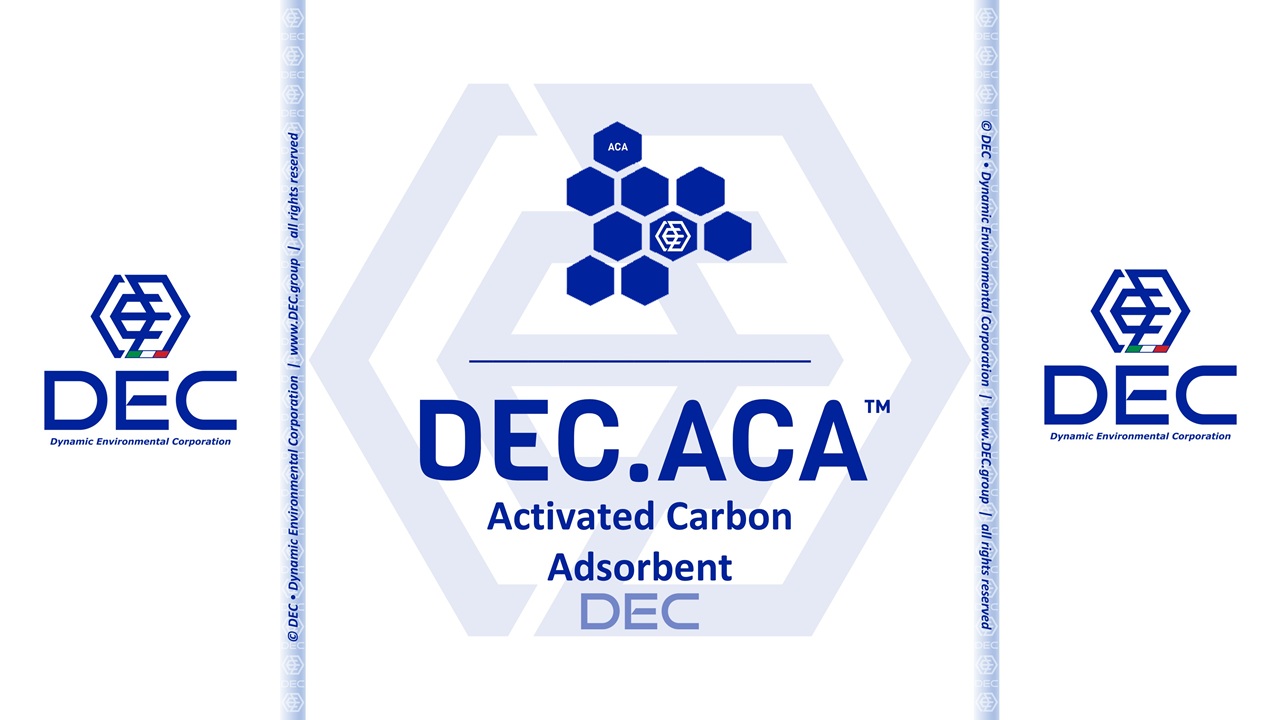
activated carbon for solvent recovery
DEC.ACA™
Controlling Volatile Organic Compound (VOC) emissions effectively requires advanced filtration technologies, and activated carbon stands out as a premier adsorbent. Its high porosity and extensive surface area make it exceptionally efficient at capturing a wide spectrum of VOCs from industrial exhaust streams. Implementing activated carbon within VOC emission control systems ensures compliance with stringent environmental regulations and contributes to a cleaner, safer operational environment. Explore DEC's comprehensive range of activated carbon-based solutions designed for robust and reliable VOC abatement, offering a sustainable and cost-effective approach to air purification.
Great flexibility, several different types and grades available and a variety of industrial applications: activated carbon is the most widely used filtration media for treatments of fluids, in both liquid and gaseosus phase. Thanks to its non-polar surface characteristic, activated carbon shows high affinity with most organics (VOCs), while showing low affinity with water, in contrast with the polar desiccating adsorbents (such as molecular sieves).
Extruded Activated Carbon, with its cylindrical form, offers a strong balance of performance. It provides the flow rates and durability of granular activated carbon (GAC) along with the effective adsorption of powdered activated carbon (PAC). This makes it ideal for gas-phase Solvent Recovery Units (SRU) where performance and pressure drop are concerns.

Activated carbon is a carbon structure which has been given a particular porosity, with a resulting inner surface accessible to molecules of varying nature and size.
The secret behind activated carbon's effectiveness lies in its internal structure. It's a form of carbon processed to have an incredibly high surface area: this is achieved by creating a network of tiny pores throughout the carbon particles. Imagine a "microscopic sponge" – that's essentially what activated carbon is like.
Due to this extensive network of pores, activated carbon has a massive surface area for its size. This characteristic makes it highly effective in capturing and trapping (adsorption) various unwanted substances (VOCs) from gases.
This porosity is developed by the activation process, which creates a remarkable power of adsorption, an indispensable process in VOC recovery techniques.
Activated carbon is the ideal adsorption media for industrial filtration (AFU) and vapor phase solvent recovery units (SRU).

activated carbon for solvent recovery | classification • DEC.ACA™
Active carbons can be divided into the following types according to their use:
activated carbon for solvent recovery | adsorption • DEC.ACA™
Effective solvent recovery depends on the use of high-quality activated carbon with a properly distributed pore size.
The process by which activated carbon captures impurities is called adsorption. It's distinct from absorption, where a substance is dissolved throughout another material.
Adsorption is a physical (reversible) process where organic molecules are held at the carbon surface, by an attraction (Van Der Waals forces) resulting from intermolecular attraction (relatively weak, if compared to normal chemical bonds).
During adsorption, contaminant molecules in the SLA (Solvent Laden Air) encounter and adhere to the surface of a solid adsorbent, particularly within its micropores. This physical process, occurring at specific active sites leads to surface condensation of the contaminants (releasing heat). As the active sites become occupied, the adsorbent's capacity diminishes, culminating in adsorption breakthrough and necessitating desorption for regeneration.
The factors influencing the amount of gas adsorbed by activated carbon include:
activated carbon for solvent recovery | desorption • DEC.ACA™
Desorption is the reversal of the adsorption process. In the (in situ) regeneration process, the adsorbed solvent is stripped from the activated carbon, using two processes, alone or combined:
activated carbon for solvent recovery | market drivers • DEC.ACA™
The market drivers influencing the activated carbon solvent recovery sector are multifaceted:

activated carbon for solvent recovery | LTKW • DEC.ACA™
DEC offers tailored activated carbon solutions for diverse VOC emission control needs. Our expertise encompasses granular and powdered activated carbon applications, ensuring optimal performance across various industrial processes. Whether you require information on how activated carbon works for VOC removal, seek to understand its benefits over other technologies, or need to identify the right type of activated carbon for your specific VOC filtration system, DEC provides comprehensive support. We address key concerns such as activated carbon replacement frequency, lifespan extension strategies, and adsorption capacity. For businesses looking to implement or upgrade their VOC control, we offer competitive pricing on high-performance activated carbon filters and complete industrial systems. Contact DEC today for a quote on our custom activated carbon VOC abatement technologies and experience a cleaner, more compliant future.
